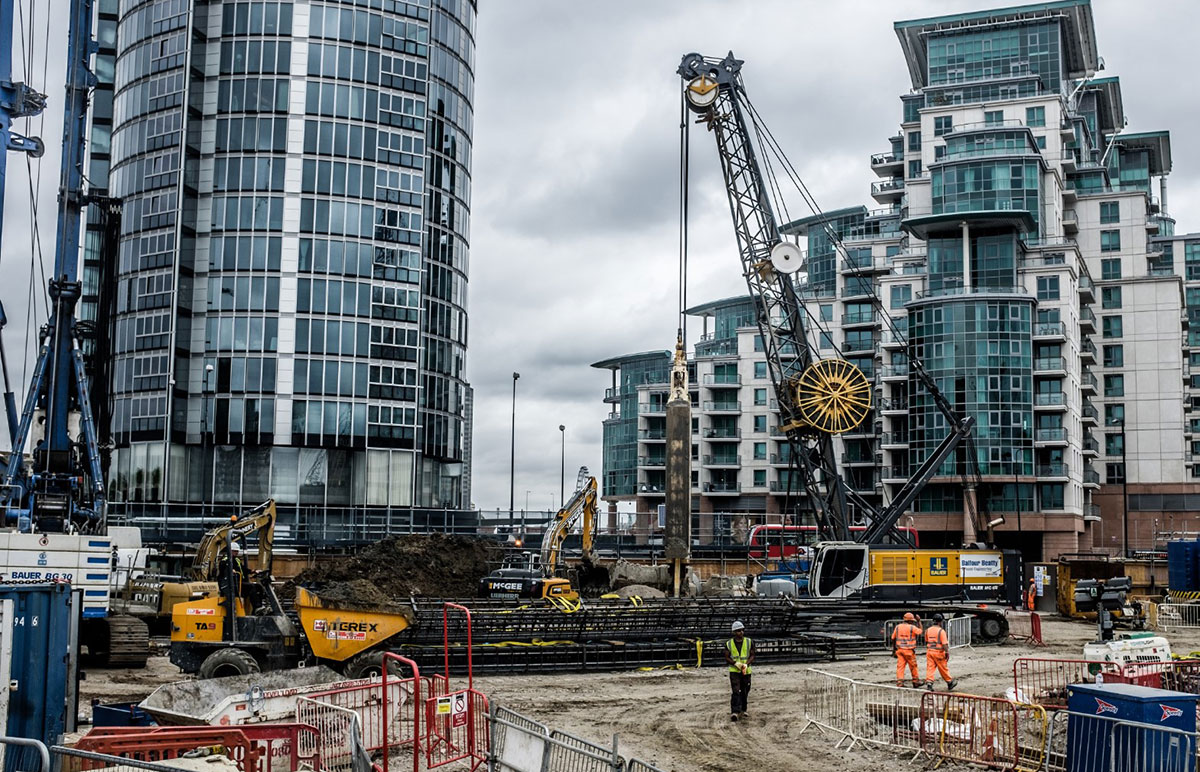The 10-Second Trick For Geotheta
The 10-Second Trick For Geotheta
Blog Article
The Best Guide To Geotheta
Table of ContentsSome Of GeothetaSome Ideas on Geotheta You Need To KnowSome Known Details About Geotheta The 8-Minute Rule for GeothetaThe Only Guide for Geotheta

They carry out website examinations, accumulate samples, execute lab tests, and assess data to evaluate the suitability of the ground for construction projects - Geotechnical Engineers. Based upon their findings, geotechnical engineers provide recommendations for foundation layout, incline security, preserving frameworks, and reduction of geotechnical risks. They work together with other specialists, such as designers, architectural designers, and building and construction teams, to ensure that geotechnical considerations are incorporated right into the general task layout and application
By assessing the actions and properties of dirt and rock, they can recognize prospective geotechnical hazards such as landslides, dirt negotiation, or incline instability. Their competence assists prevent failings or mishaps that can jeopardize lives and building. Below are some thorough tasks and obligations of a geotechnical engineer: Site Investigation: Geotechnical designers conduct website investigations to gather information on subsurface conditions.
They interpret the data to recognize the properties and actions of the dirt and rock, including their toughness, leaks in the structure, compaction features, and groundwater problems. Geotechnical Evaluation and Layout: Geotechnical designers examine the data accumulated throughout website investigations to assess the stability and viability of the website for building and construction tasks. They do geotechnical computations and modeling to examine factors such as bearing capacity, settlement, incline security, side earth pressures, and groundwater circulation.
Rumored Buzz on Geotheta
Structure Layout: Geotechnical engineers play a crucial role in developing foundations that can safely sustain the intended structure. They assess the dirt conditions and lots requirements to figure out the appropriate foundation kind, such as superficial foundations (e.g., footings), deep foundations (e.g (https://www.openlearning.com/u/ianhammond-shld0k/)., heaps), or specialized methods like dirt improvement. They consider elements such as negotiation limitations, birthing ability, and soil-structure communication to create optimal structure layouts
They evaluate building and construction plans, display website activities, and perform area assessments to confirm that the design suggestions are followed. If unforeseen geotechnical problems arise, they evaluate the situation and provide referrals for remediation or changes to the layout. Danger Analysis and Reduction: Geotechnical designers assess geotechnical dangers and dangers related to the project website, such as landslides, liquefaction, or soil disintegration.

Partnership and Communication: Geotechnical designers work very closely with various other experts included in a project, such as engineers, structural engineers, and construction groups. Efficient interaction and collaboration are necessary to integrate geotechnical factors to consider right into the total project layout and building and construction procedure. Geotechnical designers supply technological know-how, response questions, and ensure that geotechnical demands are met.
Not known Facts About Geotheta
Below are some kinds of geotechnical designers: Structure Engineer: Structure engineers specialize in developing and assessing foundations for frameworks. They examine the soil conditions, lots requirements, and website attributes to identify one of the most proper structure type and design, such as shallow foundations, deep structures, or specialized methods like heap structures.
They assess the variables influencing slope stability, such as soil residential or commercial properties, groundwater problems, and slope geometry, and establish techniques to avoid incline failures and reduce risks. Earthquake Engineer: Earthquake designers concentrate on evaluating and designing frameworks to hold up against seismic pressures. They evaluate the seismic danger of a website, examine soil liquefaction potential, and establish seismic design criteria to guarantee the safety and strength of frameworks during earthquakes.
They execute field testing, collect samples, and analyze the accumulated information to characterize the dirt homes, geologic developments, and groundwater conditions at a site. Geotechnical Instrumentation Engineer: Geotechnical instrumentation designers focus on monitoring and gauging the actions of dirt, rock, and structures. They set up and preserve instrumentation systems that keep track of elements such as dirt settlement, groundwater levels, slope activities, and architectural displacements to analyze efficiency and go to this website provide early cautions of prospective issues.
The Greatest Guide To Geotheta
They perform tests such as triaxial tests, combination examinations, straight shear tests, and permeability tests to collect information for geotechnical evaluation and style. Geosynthetics Engineer: Geosynthetics engineers concentrate on the style and application of geosynthetic products, such as geotextiles, geogrids, and geomembranes. They utilize these products to boost soil stability, enhance inclines, provide water drainage services, and control erosion.
They tend to be investigatory people, which suggests they're intellectual, reflective, and inquisitive. They wonder, systematic, logical, logical, and logical. A few of them are also social, meaning they're kind, generous, participating, individual, caring, practical, understanding, tactful, and friendly. Does this audio like you? Take our cost-free profession test to discover if geotechnical designer is one of your top job matches.
In the workplace setting, geotechnical designers use specialized software application tools to carry out computations, create designs, and analyze data. They prepare records, testimonial job specs, connect with customers and group participants, and coordinate project activities. The workplace setup offers a favorable atmosphere for research study, evaluation, and collaboration with various other specialists associated with the project.
Some Known Incorrect Statements About Geotheta
They often go to project websites to conduct website investigations, examine geotechnical problems, and collect information for evaluation. These sees include taking a trip to different areas, occasionally in remote or difficult surfaces. Geotechnical designers may perform dirt sampling, conduct examinations, and screen building tasks to make certain that the geotechnical facets of the task are being executed correctly.
Geotechnical engineers likewise function in specialized geotechnical research laboratories. In these centers, they carry out experiments, execute examinations on soil and rock samples, and evaluate the engineering residential or commercial properties of the materials. Geotechnical laboratory designers function extensively in these environments, dealing with testing tools, running instruments, and tape-recording data. They collaborate with various other laboratory personnel to make sure exact and trustworthy screening outcomes.
Report this page